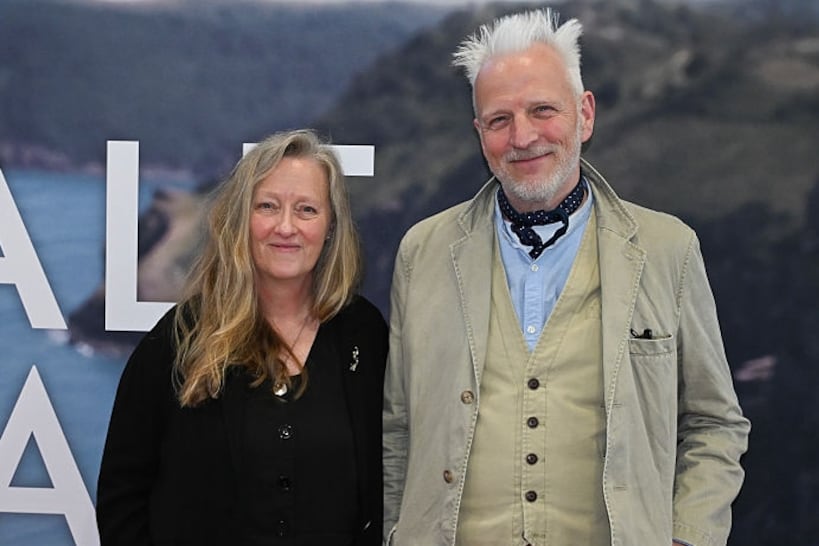Actor Matthew McConaughey took to the podium at the White House’s daily press briefing on Tuesday to highlight the lives of those lost in the Uvalde mass shooting and to call for gun control reforms in the United States.
McConaughey is a native of Uvalde and had spent much of the last week there, meeting the families of the 19 children and two teachers who died in the atrocity.
In an emotional presentation, he spoke about Maite Rodriguez, one of the schoolchildren killed who had worn green Converse shoes with a heart drawn on one of them. These shoes had been used to identify her body in the aftermath of the attack due to the devastation wrought by the assault rifle used by the killer.
McConaughey said: “Due to the exceptionally large exit wounds of an AR-15 rifle, most of the bodies [were] so mutilated that only a DNA test or green Converse could identify them. Many children were left not only dead but hollow. So, yes, counsellors are going to be needed in Uvalde for a long time.”
READ MORE
The actor did not press the issue. However, his comments fed into a debate taking place in the US on whether it would change the narrative on the need for gun control reforms if people could see the scale and type of injuries caused by assault rifles.
[ Biden urges ‘rational’ action on US gun control after Texas shootingOpens in new window ]
Earlier this week, former US homeland security secretary in the Obama administration Jeh Johnson argued it was time to show the real horror associated with mass shootings, in pictures.
Johnson said: “We need an Emmett Till moment.”
Emmet Till may not be a name familiar to people in Ireland in 2022. However, the legacy of his horrific death was linked to the emergence of the civil rights movement in the US in the 1960s.
He was a 14-year-old African-American boy who, on a visit with family in Mississippi in the mid-1950s, stopped off to buy chewing gum at a grocery store.
The full details of what happened are unclear but it was alleged that he either whistled at, flirted with or touched the hand of the store’s white woman clerk.
Till was subsequently abducted, tortured, shot in the head and dumped in a river by two white men who were later acquitted by an all-white Mississippi jury.
At the funeral of her son, his mother insisted on an open casket when the body was shipped back to Chicago. It remained on display for several days and the thousands of people who attended could see the evidence of the hate crime.
Till’s mother said she opted for an open casket “to let the world see what has happened, because there is no way I could describe this”.
[ Texas shooting: Who are the victims?Opens in new window ]
Two magazines later published graphic photos of the body, leading to outrage in many parts of the US.
However, the two accused were acquitted by the white jury after deliberating for just over an hour.
Johnson, in his opinion piece, argued the photographs of Till’s body, dressed in a suit but with a bloated, mutilated head and face, became an international spectacle, burned into the conscience of anyone who saw them.
“The images helped spark the civil rights movement, including the Montgomery bus boycott that began three months later in December 1955. Time magazine called the image of Till’s body one of the 100 most influential photos of all time.”
Johnson contended that if families agreed, “something graphic is required to awaken the public to the real horror of these repeated tragedies”.
“Certain images do more than speak a thousand words.”
[ Texas school shooting: Questions persist in the wake of an unspeakable tragedyOpens in new window ]
He argued one of the reasons that moves to limit access to guns had failed was that “the horror has been kept under wraps”.
But this argument is not new. In the wake of the Sandy Hook school shootings a decade ago, at least one parent briefly contemplated showing the world the damage an assault rifle could do to a small child.
The parent’s first thought was that this could change some minds. His second thought was, “Not my kid”.
Ironically, Johnson’s argument for the use of graphic images to prompt change came 50 years to the week from the publication of one of the most recognised pictures of the Vietnam War — the photo of a naked nine-year-old girl running down a street, with outstretched arms, screaming in pain after being hit by napalm.
The young girl in the well-known Associated Press photo was Kim Phuc Phan Thi, who lives in Ontario. She now travels around the world providing medical and psychological assistance to children affected by war.
Fifty years on she spoke about her different views over time on the photo. She said the photographer after taking the picture had wrapped her in a blanket, took her for medical attention and probably saved her life.
On the other hand, there were times in her life when she hated the picture and asked why had the photographer taken it and why had her parents not protected her.
















